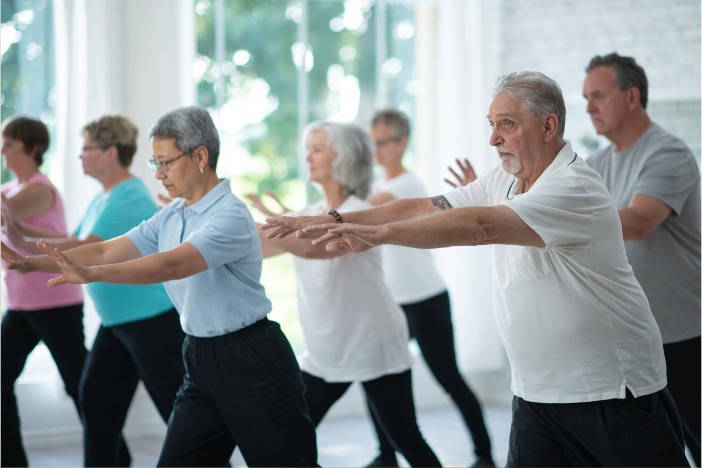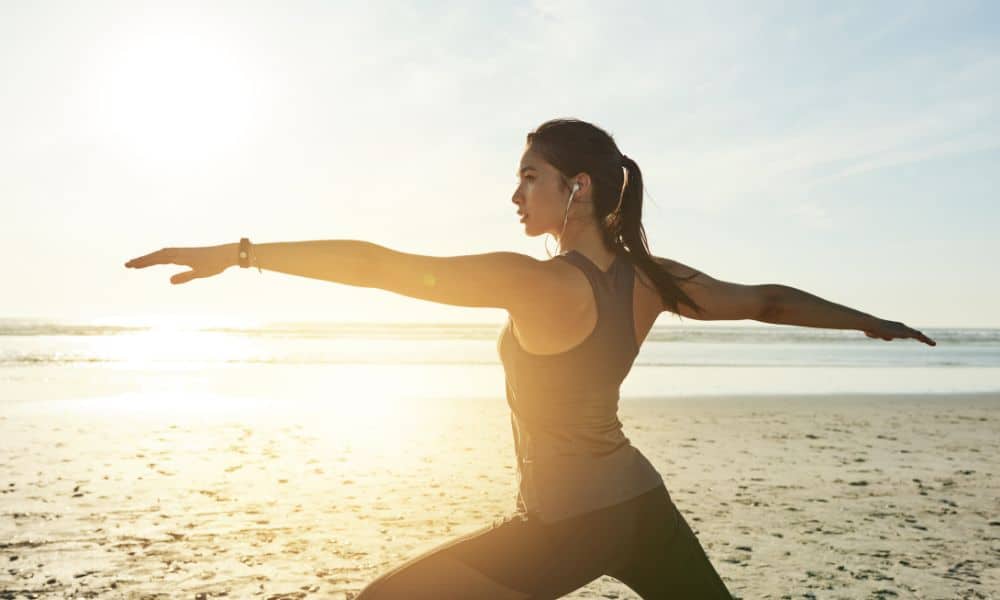Aging presents various physical and mental challenges that can impact overall well-being. Nevertheless, sustaining an active lifestyle is among the most effective strategies to enhance longevity, mobility, and emotional health in older adults. Customized fitness programs for seniors can mitigate health risks, boost cognitive abilities, and elevate the overall quality of life. This article will discuss elderly homecare and how fitness routines can improve senior health.
Integrating exercise into daily activities can significantly improve the independence and well-being of individuals receiving home care. Activities such as gentle stretching, strength training, or low-impact aerobic exercises provide numerous advantages that enable seniors to stay active, healthy and engaged.
The Significance of Fitness for Seniors
As seniors age, they often face diminished muscle strength, decreased bone density, and a decline in cardiovascular health. Regular physical activity can help counteract these changes and foster a healthier lifestyle. The following outlines how fitness routines can be beneficial:
1. Enhancing Mobility and Flexibility
Individuals may experience joint stiffness and muscle tightness with age, which can restrict movement and lead to a more sedentary lifestyle. Consistent stretching and flexibility exercises can maintain joint mobility, alleviate pain, and prevent stiffness. Yoga, tai chi, and basic stretching routines can significantly enhance flexibility and balance, reducing the risk of falls and injuries.
2. Improving Cardiovascular Health
Heart disease is prevalent among seniors; however, participating in light aerobic activities can support heart health. Walking, swimming, or cycling strengthens the heart and enhances circulation. These activities also assist in regulating blood pressure, lowering cholesterol levels, and decreasing stroke risk.
3. Strengthening Muscles and Bones
The aging process naturally results in a decline in muscle mass and bone density, heightening the risk of osteoporosis and fractures. Strength training exercises, including resistance band workouts or light weightlifting, are practical ways to build and preserve muscle strength. Stronger muscles contribute to better overall physical function and stability.
4. Enhancing Mental and Emotional Well-Being
Physical exercise is advantageous for physical health and essential for mental well-being. Engaging in physical activity triggers the release of endorphins, which can alleviate stress, anxiety, and depressive symptoms. Regular exercise improves sleep quality and cognitive performance, reducing the likelihood of developing dementia and Alzheimer’s disease.
Home Care for Seniors: Facilitating Fitness
Maintaining an active lifestyle can be challenging for elderly individuals receiving home care, particularly when mobility is restricted. Nevertheless, caregivers and home health professionals can assist in incorporating fitness activities into daily routines, allowing seniors to remain active without the risk of overexertion.
1. Customized Exercise Programs
Each senior possesses unique physical capabilities, necessitating that fitness routines be customized to meet individual requirements. Caregivers or fitness specialists with expertise in senior health can develop tailored workout plans that consider medical conditions, fitness levels, and personal preferences.
2. Seated Exercises for Those with Limited Mobility
For seniors facing mobility challenges, seated exercises offer an effective means of staying active. Simple movements such as leg lifts, arm circles, and torso twists can enhance circulation and preserve muscle strength without standing or walking.
3. Workouts Focused on Balance and Fall Prevention
Falls represent a significant risk for seniors. Balance exercises, such as standing on one leg, heel-to-toe walking, and utilizing stability balls, can strengthen core muscles and enhance coordination, thereby minimizing the risk of falls.
4. Fostering Social Connections Through Group Exercise
For seniors experiencing feelings of isolation, participating in group exercise classes can yield physical and social benefits. Activities such as senior yoga, water aerobics, or dance classes promote movement while encouraging social interaction and emotional support.
Integrating Fitness into Everyday Life
Even minor physical activities throughout the day can profoundly affect overall health. Below are some straightforward methods for seniors to remain active daily.
1. Incorporating Walking into Daily Routines
Walking is a highly effective and gentle form of exercise for older adults. Walking daily, whether in a garden, through the neighborhood, or within the confines of the home, contributes significantly to cardiovascular health and overall mobility.
2. Utilizing Household Tasks for Physical Activity
Engaging in light household chores, such as gardening, sweeping, or organizing, can promote movement among seniors. These activities enhance coordination and foster a sense of achievement.
3. Stretching While Watching Television
Rather than remaining sedentary during television viewing, seniors can perform gentle stretches, leg lifts, or seated arm exercises to keep their muscles active and engaged.
4. Exercises in Water
Swimming or participating in water aerobics is particularly beneficial for seniors experiencing arthritis or joint discomfort. Water’s buoyancy alleviates joint stress while facilitating effective exercise routines.
The Importance of Home Care in Supporting Senior Fitness
Professional caregivers are essential in helping seniors remain active and involved in their fitness activities. Home care services for the elderly can seamlessly integrate physical exercises into a senior’s daily life, providing motivation and supervision to minimize the risk of injury.
1. Providing Encouragement and Support
Many seniors may be reluctant to begin exercising due to concerns about injury or a lack of motivation. Caregivers can offer the encouragement needed to help seniors maintain their exercise commitments.
2. Ensuring Safe Exercise Practices
Assistance during exercise enhances safety, particularly for seniors with mobility limitations or health issues. Caregivers can oversee movements and offer support to prevent falls or injuries.
3. Facilitating Transportation to Fitness Activities
For seniors interested in attending group exercise classes, caregivers can assist with transportation, ensuring they have the opportunity to engage in fitness programs at local community centers or gyms.
4. Tracking Progress and Modifying Routines
As individuals advance in age, their fitness requirements may evolve. Caregivers and family members can monitor progress and adjust exercise regimens to align with changing capabilities and health statuses.
Conclusion
Consistent fitness routines are crucial for seniors to preserve mobility, autonomy, and overall health with elderly homecare. Gentle stretching, strength training, or aerobic exercises can effectively lower health risks and enhance life quality.
Professional caregivers can offer essential guidance, encouragement, and support to seniors receiving home care and help them maintain an active and healthy lifestyle. By providing tailored exercise programs and secure workout settings, home care services can significantly improve the well-being of older adults, allowing them to enjoy their later years with energy and independence.
Read Next…
- How to Add Side Dishes to a Meal Plan for Weight Loss When Your Main Course Is Protein
- Elderly Homecare: How Fitness Routines Can Improve Senior Health
- Rest and Recovery: How It Boosts Fat Loss and Muscle Growth
- Slim Down with These 6 Easy Air Fryer Recipes for Weight Loss
- Fat Storage in Muscles: The Impact of Different Types of Exercise




